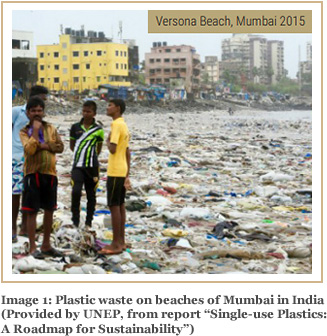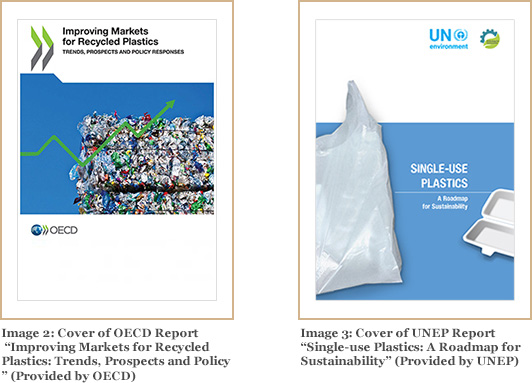News
Too Much Plastic Waste in the Ocean Updated in October 2018
The amount of plastic waste worldwide has increased by more than 300 million tons a year. The maximum estimate of plastic waste released into the ocean reached 12 million tons per year. OECD has compiled a report containing such data, demonstrating how seriously plastic waste is affecting the ocean. The report warns that human life could be threatened through consumption of fish and shellfish that ingested plastic waste. UNEP (United Nations Environment Program) has also compiled a report stating that 67 countries/regions have introduced some kind of regulatory measures including the prohibition to produce plastic products, suggesting other countries to do the same.
Plastic wastes are generated from bottled drinks, shopping bags and various other products made from plastic. Increase in the global production and use of plastic are causing large amounts of it to flow into the ocean. International countermeasures are delayed, and it has become a major global issue.
The abovementioned 160-page OECD report is titled “Improving Markets for Recycled Plastics: Trends, Prospects and Policy Responses.” According to the report, world’s plastic production in 1950 was 2 million tons, but in 2015, it reached 407 million tons. Out of that, only 14-18% get recycled. Plastic waste is constantly on the rise to reach 302 million tons in 2015. This accounts for 3-4% of all wastes.
The reason why plastic waste is so damaging is because the waste is outpouring into the sea and increasingly contaminating the ocean. The report mentions that in 2010, the amount of dumped plastic or plastic outpour from landfills reached 4 million to 12 million tons annually. Decrease in tourism due to contaminated beaches and negative impact on fishery led to economic damages amounting to 13 billion dollars per year.
The report further alarms health risks from eating fish that swallowed plastic.
Prior to the OECD report, UNEP published a 90-page report titled “Single-Use Plastics: A Roadmap for Sustainability.” It focuses on national measures towards plastic waste. According to the report, more than 67 countries and regions have introduced some kind of regulatory measures like banning production of plastic shopping bags and bottles that can cause marine pollution or charging penalty when plastic is used.
In Africa for instance, 25 countries have introduced regulatory measures: Rwanda banned the production, consumption and import of plastic shopping bags in 2008. Kenya has also implemented similar regulations in 2017. In Europe, 20 countries have implemented regulations. In 2011, Italy banned plastic shopping bags using materials that are not biodegradable. In Asia, China prohibited shopping bags that are not biodegradable in 2008. In 2016, India also prohibited use of shopping bags that are not biodegraded by microorganisms. In the United States, the city of New York, the state of Hawaii, California and other states/cities are implementing regulations.
Another UNEP report titled “The State of Plastics” estimates that by 2030, plastic production worldwide shall reach 619 million tons per year and emphasized the swift need for all nations to incorporate measures.
Led by EU, the June G7 Summit Meeting adopted the Ocean Plastics Charter. It includes numerical targets to reduce plastic waste. The United States and Japan, the two countries known to dispose large amounts of plastic waste, did not sign the charter.
According to sources close to Japan’s Ministry of the Environment, plastic waste will become one of the key issues during the G20 ministers’ meeting to be held in Osaka in June 2019.









